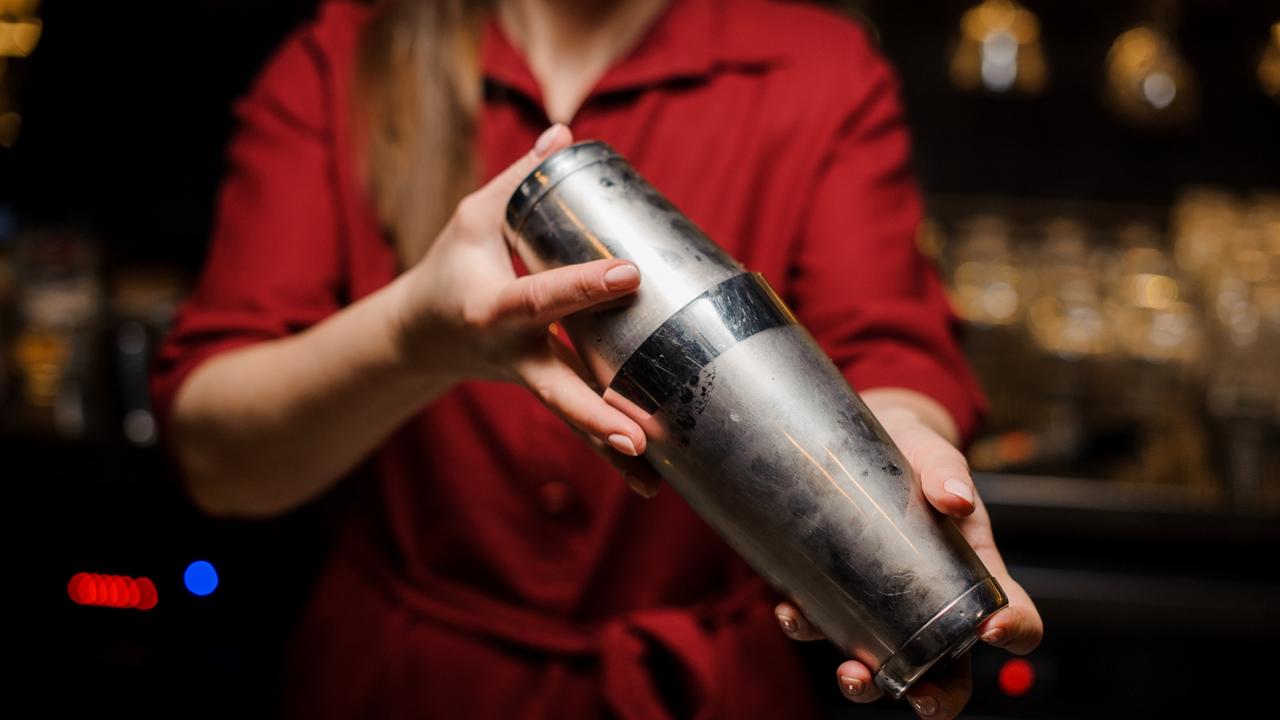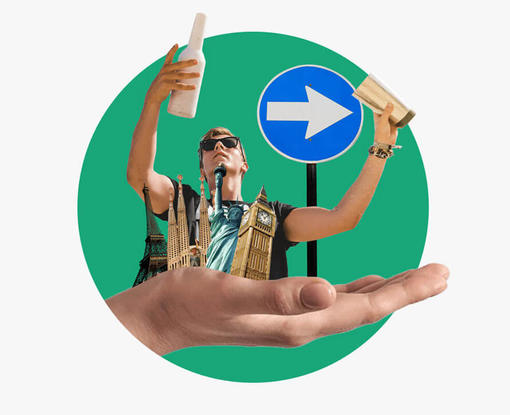Ever been at a bar and suddenly there’s a roar of noise? The bartender has probably picked up the cocktail shaker and began shaking up a lucky customer's cocktail. It’s the most extroverted skill a bartender possesses, but what is shaking exactly? And how do you use a cocktail shaker?
Read on to learn more about this essential bar tool…
Using a cocktail shaker
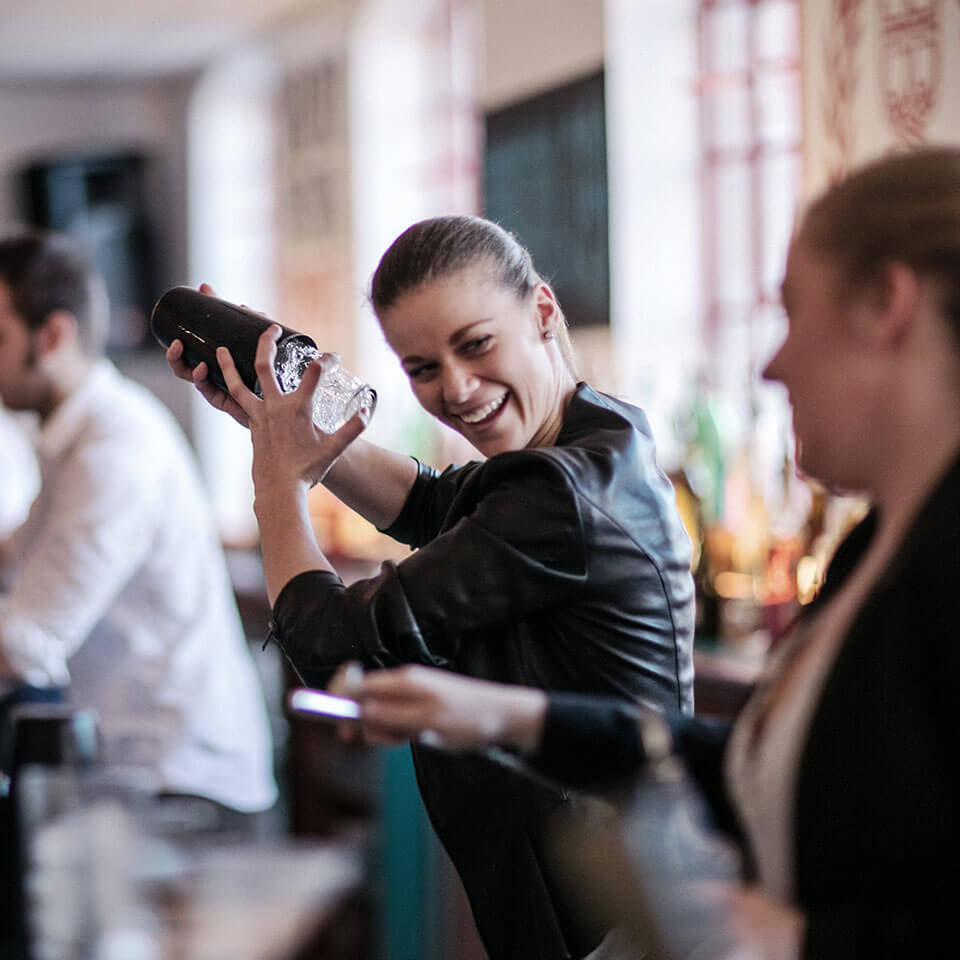
Cocktail shakers are pretty straight forward to use but stick to this five-step guide and you’ll thrive…
1. Fill the cocktail shaker 3/4 full of ice and add your ingredients. If you’re using a Boston Shaker, then fill the smaller tin (cheater tin or pint glass) this same way.
2. Put the cap on the Cobbler Shaker (ensuring the strainer cap is on too) or fix the second larger tin of your Boston Shaker inside it at an angle. Give it a firm tap to create a seal.
3. Place one hand on the cocktail shaker with either your thumb or bottom two fingers over its base. Place the other hand on the other half of your shaker setup, again placing your thumb or bottom two fingers on the top of the vessel.
4. Face down the bar and shake vigorously for 10-15 seconds. With a Cobbler Shaker all you need to do now is remove the cap and strain your cocktail.
5. With a Boston Shaker, it’s a little trickier. You can either tap the shaker on the side to break the airtight seal or push the second part of your setup diagonally toward the centre whilst simultaneously squeezing just above where the seal is. A slight pop will tell you of the release of pressure. To strain a Boston Shaker, use a Hawthorne Strainer for a clean, double strain.
Shaking cocktails over and over again will ensure you become mastered at this skill. You may not get it the first time, but rest assured that over time you will!
Why do bartenders shake cocktails?

There are many reasons why bartenders do this magical performance. The main reasons are to simultaneously chill and mix the ingredients together. Shaking a cocktail will also mean that the ingredients are being ‘aerated’. By this, we mean that air is being infused into them within the cocktail shaker, which changes the texture of the cocktail. Cocktails are much lighter an brighter after a spell in the cocktail shaker.
Of course, bartenders can stir a cocktail, but the cocktail will not be aerated. Stirring and shaking deliver different results to the cocktail. Sometimes, a cocktail needs to be made lighter and given life by the cocktail shaker. The saying in bartending goes, ‘shake it, to wake it’.
Now, I’m sure you’re wondering when to stir and when to shake? It’s simple. If the cocktail contains something other than just spirits, then shake it. Anything with citrus or egg whites must also get the cocktail shaker treatment. Dairy-based cocktail recipes should be done on a case by case basis. Some should be shaken, some not, so it’s good to check what recipes call for shaking.
Types of cocktail shakers

There are two types of cocktail shakers that bartenders use from the bartender basics. These are the Cobbler Shaker and Boston Shaker. Whether you’re making a Margarita, Cosmopolitan or one of the many types of Martini, a Boston and Cobbler Shaker does the job. But what’s the difference between them?
Boston Shaker - The Boston Shaker is probably the most popular of the two cocktail shakers used by bartenders. It’s a two piece cocktail shaker, usually with two stainless steel tins. One tin is larger than the other and the smaller tin is where the ingredients are poured into. The smaller tin is referred to as the ‘cheater tin’ but it can sometimes be a pint glass. The larger tin is called the ‘mixing tin’. The pieces are fitted together to create a seal and shaken up.
Cobbler Shaker - The Cobbler Shaker, unlike the Boston Shaker, is a three-piece cocktail shaker. It comes with a shaking tin, in-built strainer and a cap. This shaker is probably the most recognisable for people due to its unique design. The built-in strainer aspect means bartenders can make cocktails a lot quicker. The cap also reduces the chance of any cocktail-related accident occurring when shaking. The downfall to the Cobbler Shaker is that it can only single strain. A bartender will often use a fine strainer alongside this shaker to double strain any small particles.
Bartenders prefer the Boston Shaker over the Cobbler Shaker because of its accessibility and versatility. It doesn’t mean it makes a better drink, however. The drink’s quality comes from the person shaking, rather than the cocktail shaker itself.
Shaking Technique
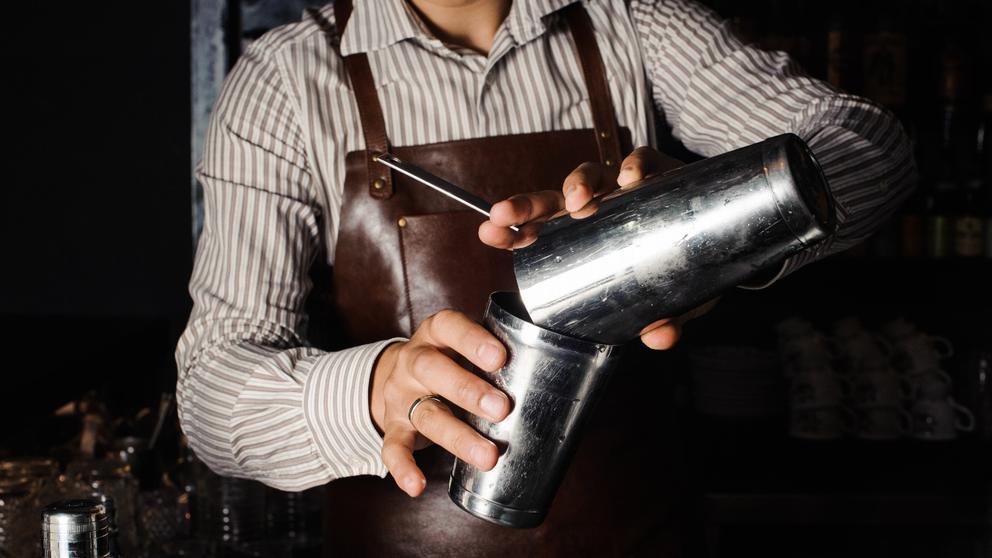
Bartenders usually look in a trance when they’re using cocktail shakers. They essentially have two thoughts when they’re shaking which are: timing and method. Get both these bits right and the success follows.
Timing - A drink needs to be shaken for between 10-15 seconds. Those who have studied the science of shaking say that 12 seconds is the perfect amount of time. Any less time and it won’t be cold enough and any more time will see the drink start to dilute as the ice cracks and melts.
Method - There’s a multitude of ways to shake a cocktail shaker. One handed, two handed, over the shoulder, over the head and under the legs are all techniques you’ll see. But none of these things actually matter. The drink just needs to be chilled, aerated and diluted a little. The key to success is hard and fast (but not rocket speed). Not desired in all parts of life, but here definitely! Just make sure the ice hits both ends of the cocktail shaker.
Cocktail shaker safety
Shaking disasters are best avoided behind the bar. You can end up with egg on your face, quite literally. Heed these two pieces of advice to avoid any accidents.
Point down the bar - When you’re shaking never shake in the direction of a guest. Always shake down the bar. The worst scenario from this is that if your shaker splits open it’ll hit or soak a co-worker, not a customer. This is normally more a problem with a Boston Shaker, so beware.
Hold with two hands - Place one hand on one end of the shaker, with either your thumb or a few fingers firmly on the end of the cocktail shaker. Do exactly the same with the other hand on the other end of the shaker. In the eventuality that the two parts separate neither will go very far as you’ll have a safe grip on both of them.
Different variations of shaking
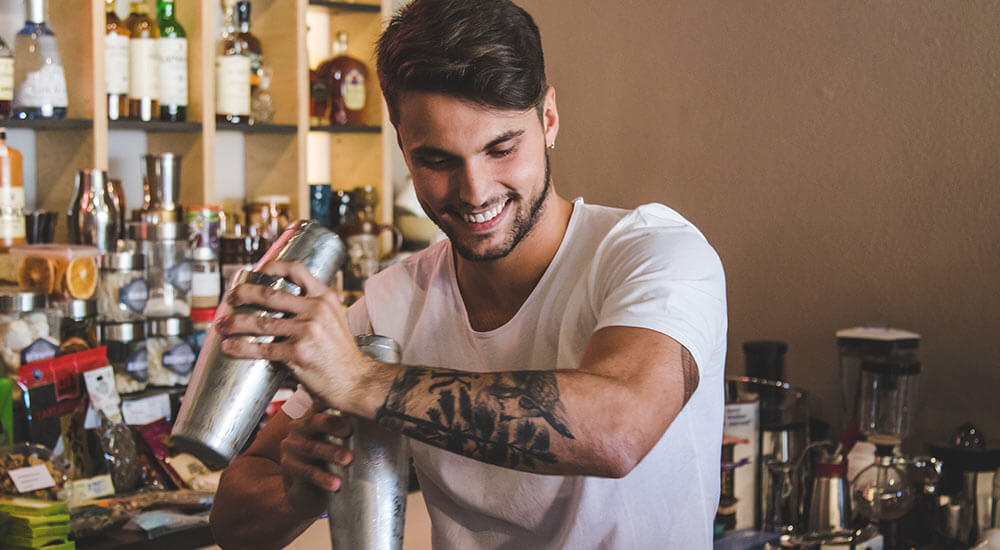
We've given you some great tips on how to shake but there's just one more consideration to make when learning how to use a cocktail shaker... Eggs...
The dry shake - This involves shaking all your ingredients without ice - hence the word dry - for 30 seconds. Then, add ice and shake as you normally would. This helps to increase the fluffiness of the head atop of the cocktail.
The reverse dry shake - Can only be done using Boston Shakers. Here you shake your cocktail as normal, then separate your shaking tins and strain the cocktail into the empty tin. Then you shake the cocktail again, in the same vessel, just without the ice. This technique produces more foam than the conventional dry shake.
Inspired to master the cocktail shaker behind the bar? Take a look at our EBS Bartender Courses.
